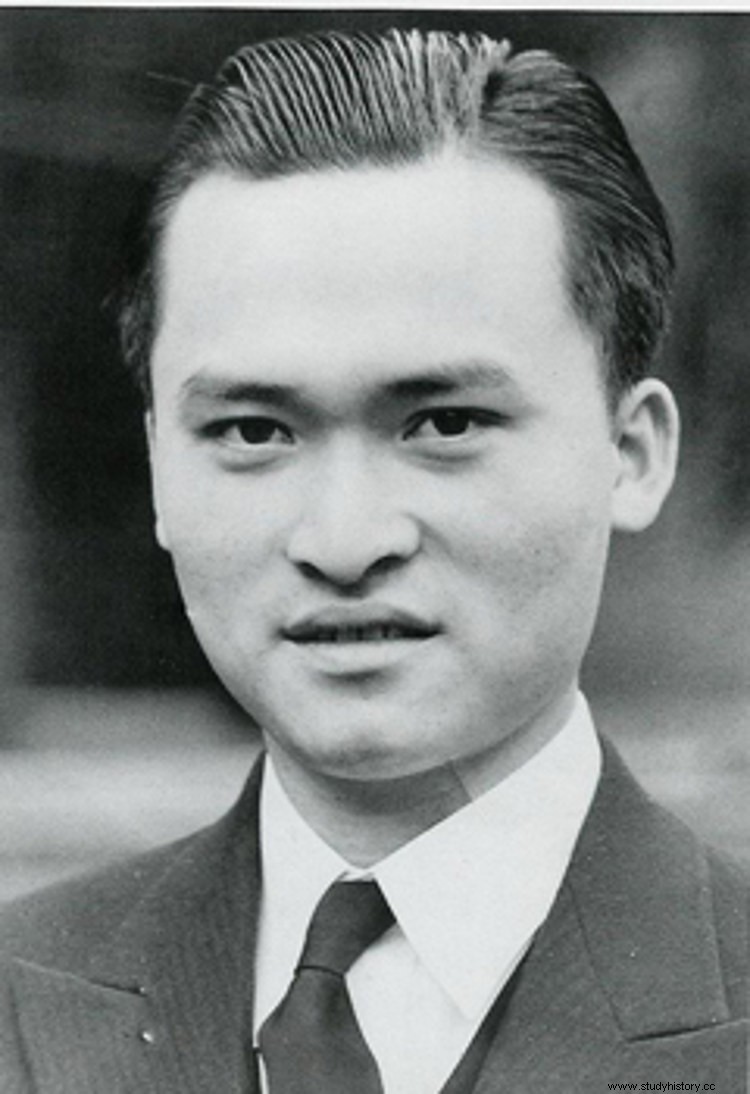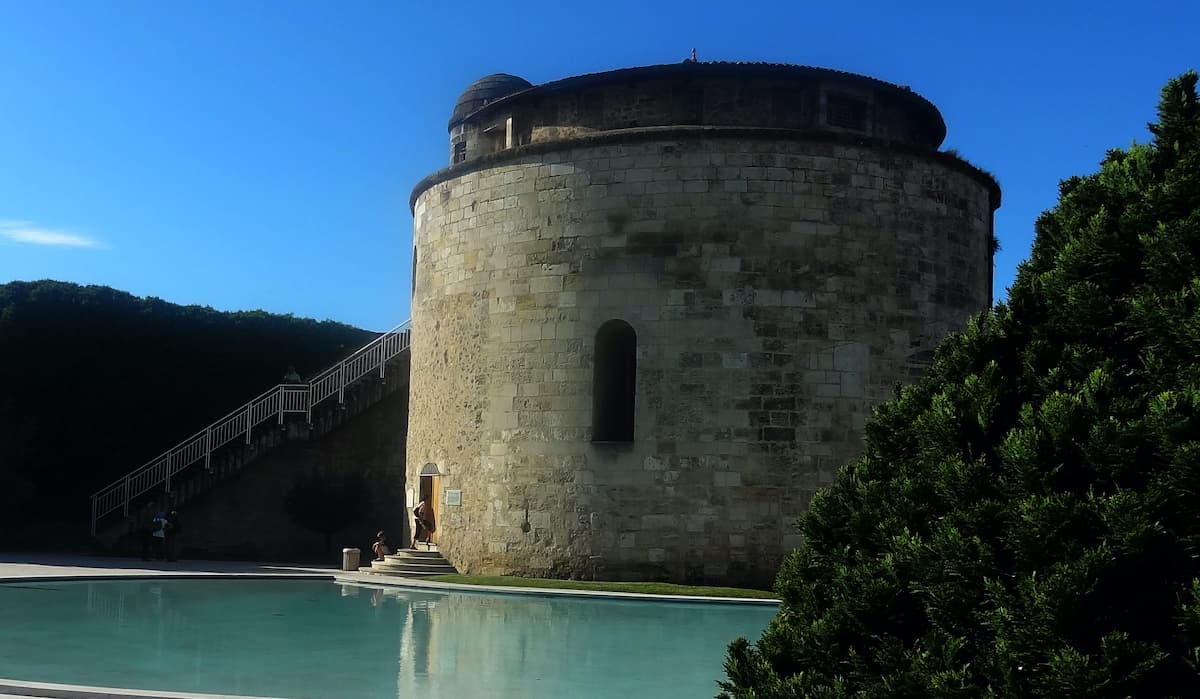If we ask what the most impressive shipwreck of World War II was, probably most will cite that of the USS Indianapolis , because of her dramatic circumstances; or that of Wilhelm Gustloff , for being the greatest naval tragedy in history; or that of Bismarck , for the charismatic popularity of that battleship; or that of the Struma , which sank with eight hundred Jewish refugees on board. But there is one whose interest is not so much in the number of victims as in the odyssey of his only survivor, the Chinese Poon Lim, who spent one hundred and thirty-three days adrift on a raft.
“I hope no one ever has to beat my record” replied the heroic sailor when a journalist let him know that no one had survived as long as he lost in the ocean. The truth is that he would fight and twice:in both cases it was about fishermen whose boats were dragged by the current out to sea, one having been missing for ten months and the other a little over fourteen. But, as we say, they were on boats, not on four makeshift boards.

Not much is known about Poon Lim before his particular adventure except that he was born on the Chinese island of Hainan in 1918 and that when he signed on as a cook on the SS Benlomond , a 6,600-ton British armed merchantman owned by Irvine’s Shipbuilding &Dry Dock Co. Ltd, surely had no idea what lay ahead. It sailed from Cape Town to New York with planned stops in Suriname and Dutch Guiana, but when it sailed off Brazil on November 23, 1942, it was hit by two torpedoes launched by the German submarine U-172.
The Benlomond she quickly sank dragging almost all her crew with her; Of a total of fifty-four men, only Lim was saved, who was able to grab a life jacket and jump overboard (another five were able to get into a boat on the other side but were captured by the Germans). The couple of hours he spent in the water did not bode well for him; however, providence was on his side:among the multiple remains of the ship that remained afloat, a kind of square platform appeared, small (less than three square meters), made of wood, which served for the sailor to climb on top , making sure that at least he wouldn't die of drowning, hypothermia, or being eaten by sharks.
Lim managed to reinforce his life-saving structure by tying down a couple of jerrycans that increased buoyancy and poles that held up a canopy to shade him from the sun; said awning was one of the canvases to protect the boats of the Benlomond. In addition, between the waves he was able to rescue a series of other things that came in handy to face the following days, among them a flashlight, smoke canisters and flares (which he would spend in vain seeing planes go by); but, above all, food, because he found eight cans of cookies, a bag of sugar, several bars of chocolate and, perhaps most importantly, a demijohn with forty liters of drinking water.
Now, both the drink and the provisions were enough to last about twenty days and they were consumed without the long-awaited ransom. In the end they ran out, so Lim had to sharpen his wits to stay alive:the unfolded fabric of the life jacket served to collect the rain and quench thirst while a flashlight cable - useless when the battery ran out - did the tricks. hook times. To fish he swam around the raft, to which he tied himself with a rope to avoid losing it; then he would open the caught fish with the sharp edge of the can lid, take out their entrails and put the meat to dry in the sun.
That yes, the star king was not always willing to collaborate and sometimes gave way to the clouds that, in turn, insisted on playing it to the castaway unleashing storms. The first he had to suffer meant losing his water and fish reserves, so when it subsided he was forced to pull atavism, catching an albatross to drink its blood, just as the character in Gabriel García Márquez's novel would narrate years later. . He managed to deceive her by making a nest with algae that he plucked from the bottom of the raft and waited patiently hidden by the canvas.
The same thing, drinking the blood, he did with the first shark he caught. Because although on one occasion he was able to fill the raft with fish when he hit a school, so many guts on board made it impossible to breathe and he ended up throwing them away... which attracted dozens of sharks that prevented him from getting back into the water. He then came to the conclusion that if he could not catch small pieces he would do it with the big ones, which would also be more practical and less tiring because he caught the sharks from the boat.
They had more power, of course, and that required making a new hook from a properly bent raft nail and wrapping your hands in rags so the hook string wouldn't hurt your palms. They also had to be finished off when depositing them on the boards, since they used to stir; the demijohn was strong enough. The irony of the situation is that, properly dried, Lim could taste shark fins, a delicacy in China.
So days, weeks and months went by, which the castaway first counted by making knots until he had to go on to carve notches of each full moon in the wood. During that time that nutshell, if it came to that, only came across one ship:a merchant ship that, according to Lim, spotted him but did not come to his rescue, perhaps seeing his Asian features and thinking he was Japanese; It is also possible that the ship thought that it was a bait, since the German submarines used to leave false shipwrecks so that the enemy ships would stop and be able to torpedo them more easily. In reverse, she crossed paths with a U-boot (who knows if the same one that caused his misfortune) that he entertained himself by doing target practice on the seagulls and that he did not come to his aid either.

Those who did see him were the members of a US Navy seaplane squadron, who launched a buoy to locate him and send help. But once again the weather was against him, in the middle of a storm, and, to his despair, it separated him from the object, leaving him lost again. So it was not large vessels or institutions that brought him back, but rather a humble Brazilian sailboat manned by three fishermen who rescued him on April 5, 1943, that is, one hundred and thirty-three days later. She had traveled one thousand two hundred kilometers.
As not everything was going to be adversity, he had in his favor the fact that the current had brought him closer to the coast. Three days later he was landed in Belem, being transferred to a hospital to treat the logical dehydration, malnutrition and exhaustion - he had lost nine kilos -, although in general he presented an acceptable appearance for so many hardships suffered. He was hospitalized for a month while the British consulate processed his return and King George VI personally awarded him the Most Excellent Order of the British Empire.
The return was made with stops in Miami and New York. The USA fascinated him and at the end of the war he decided to settle there; the quota of Chinese emigrants was covered but an exception was made and a senator negotiated the granting of citizenship, thus going on to reside in Brooklyn. Death, which had haunted him so much, had to continue waiting for him until 1991. In the end, his particular odyssey turned out to be unexpectedly positive. Even his pride must have been increased knowing that the Royal Navy itself captured his imaginative resources in a manual of survival at sea.
Fonts
Sole survivor (Ruthanne Lum McCunn)/Sole survivors of the sea (James Wise, Jr)/Sailing's strangest tales (John Harding)/Wikipedia
